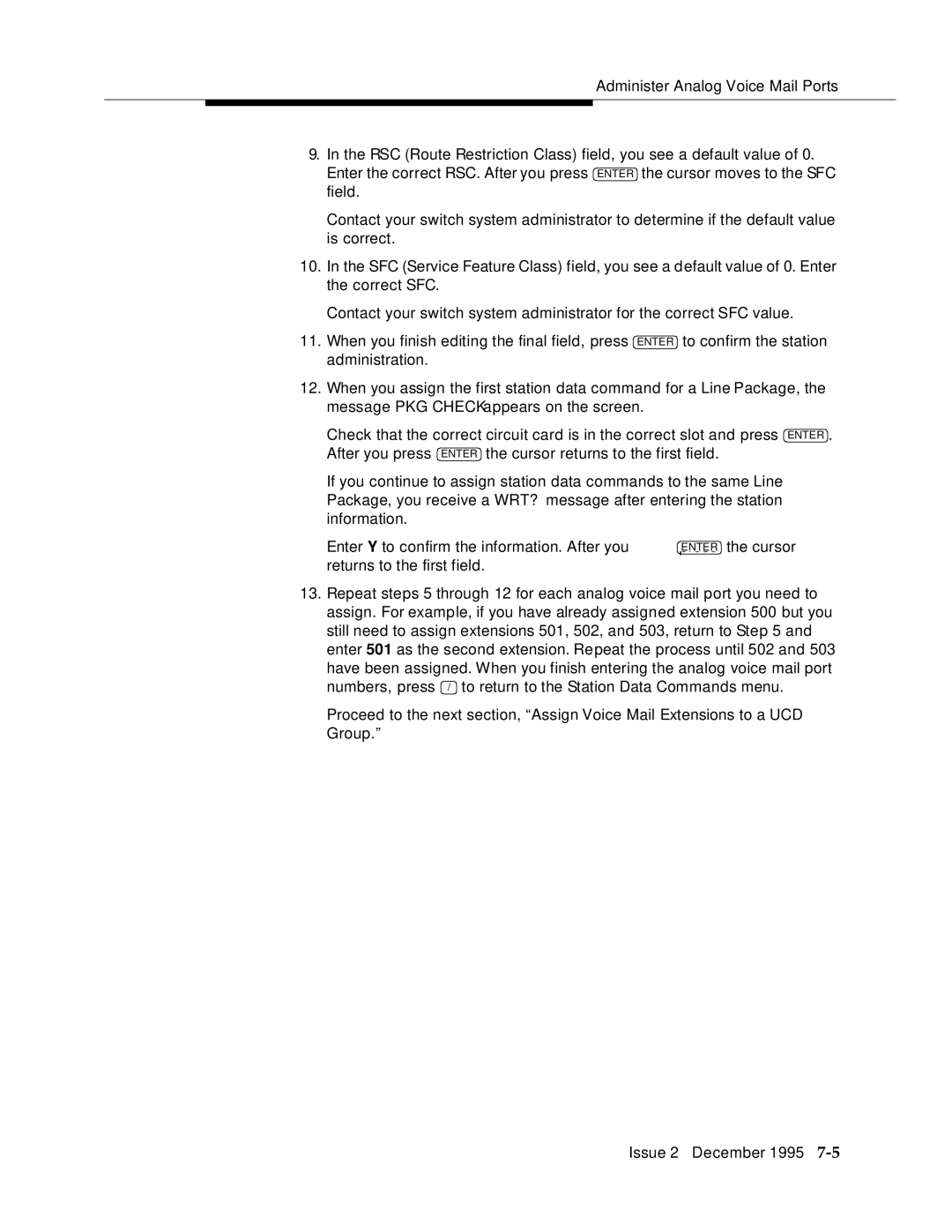
Administer Analog Voice Mail Ports
9.In the RSC (Route Restriction Class) field, you see a default value of 0. Enter the correct RSC. After you press ENTER the cursor moves to the SFC field.
Contact your switch system administrator to determine if the default value is correct.
10.In the SFC (Service Feature Class) field, you see a default value of 0. Enter the correct SFC.
Contact your switch system administrator for the correct SFC value.
11.When you finish editing the final field, press ENTER to confirm the station administration.
12.When you assign the first station data command for a Line Package, the message PKG CHECK appears on the screen.
Check that the correct circuit card is in the correct slot and press ENTER . After you press ENTER the cursor returns to the first field.
If you continue to assign station data commands to the same Line Package, you receive a WRT? message after entering the station information.
Enter Y to confirm the information. After you | ENTER the cursor |
returns to the first field. |
|
13.Repeat steps 5 through 12 for each analog voice mail port you need to assign. For example, if you have already assigned extension 500 but you still need to assign extensions 501, 502, and 503, return to Step 5 and enter 501 as the second extension. Repeat the process until 502 and 503 have been assigned. When you finish entering the analog voice mail port numbers, press / to return to the Station Data Commands menu.
Proceed to the next section, “Assign Voice Mail Extensions to a UCD Group.”
Issue 2 December 1995
